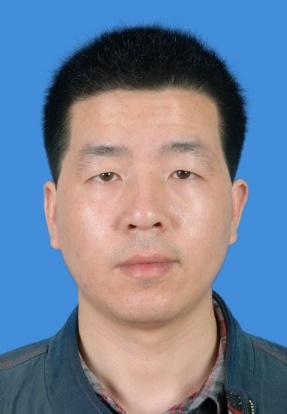* Corresponding author
[1] Yue MF, Shen H*, Li WH, Chen JF, Ye WH, Tian XS*, Yin AG, Cheng SM. Waterlogging tolerance of Bidens pilosa translates to increased competitiveness compared to native Bidens biternata. Plant and Soil, 2019, 437:301-311.
[2] Hong L, He CY, Shen H, Liu S, Liu X, Li XL, Li L. N-terminal domains of AhAREB1 protein are necessary for transcriptional characteristics and negative regulation of the AhNCED1 gene. Biologia Plantarum, 2019, 63:388-397.
[3] Shen H, Cai JN, Li MJ, Chen Q, Ye WH, Wang ZF, Lian JY, Song L. On Chinese forest canopy biodiversity monitoring. Biodiveristy Science, 2017, 25:229-236. (in Chinese with English abstract)
[4] Yue MF, Flory SL, Feng L, Ye WH, Shen H*, Tian XS*, Wang ZM. Effects of extreme temperatures on the growth and photosynthesis of invasive Bidens alba and its native congener B. biternata. Nordic Journal of Botany, 2017, 35:377-384.
[5] Yang M, He ZW, Huang YL, Lu L, Yan YB, Hong L, Shen H, Liu Y, Guo Q, Jiang L, Zhang YW, Greenberg AJ, Zhou RC, Ge XJ, Wu CI, Shi SH. The emergence of the hyperinvasive vine, Mikania micrantha (Asteraceae), via admixture and founder events inferred from population transcriptomics. Molecular Ecology, 2017, 26:3405-3423.
[6] Li T, Huang LX, Yi L, Hong L, Shen H*, Ye WH, Wang ZM. Comparative analysis of growth and physiological traits between the natural hybrid Sphagneticola trilobata x calendulacea and its parental species. Nordic Journal of Botany, 2016, 34:219-227.
[7] Shen Y, Santiago LS, Shen H, Ma L, Lian JY, Cao HL, Lu HP, Ye WH. Determinants of change in subtropical tree diameter growth with ontogenetic stage. Oecologia, 2014, 175:1315-1324.
[8] Shen H*, Xu SJ, Hong L, Wang ZM, Ye WH. Growth but not photosynthesis response of a host plant to infection by a holoparasitic plant depends on nitrogen supply. Plos One, 2013, 8.
[9] Shen H, Hong L, Chen H, Ye WH, Cao HL, Wang ZM. The response of the invasive weed Mikania micrantha to infection density of the obligate parasite Cuscuta campestris and its implications for biological control of M. micrantha. Botanical Studies, 2011, 52:89-97.
[10] Liu W, Deng RF, Liu WP, Wang ZM, Ye WH*, Wang LY, Cao HL, Shen H*. Phenotypic differentiation is associated with gender plasticity and its responsive delay to environmental changes in Alternanthera philoxeroides - Phenotypic differentiation in alligator weed. Plos One, 2011, 6.
[11] Chen H, Shen H*, Ye W, Cao H, Wang Z. Involvement of ABA in reduced photosynthesis and stomatal conductance in Cuscuta campestris - Mikania micrantha association. Biologia Plantarum, 2011, 55:545-548.
[12] Niu HY, Shen H, Ye WH. Whole-range studies on alien plant invasion: recent progress and future prospects. Biodiveristy Science, 2010, 18:559-568. (in Chinese with English abstract)
[13] Shen H, Prider JN, Facelli JM, Watling JR. The influence of the hemiparasitic angiosperm Cassytha pubescens on photosynthesis of its host Cytisus scoparius. Functional Plant Biology, 2010, 37:14-21.
[14] Shen H, Hong L, Ye WH, Cao HL, Wang ZM. The influence of the holoparasitic plant Cuscuta campestris on the growth and photosynthesis of its host Mikania micrantha. Journal of Experimental Botany, 2007, 58:2929-2937.
[15] Shen H, Ye W, Hong L, Huang H, Wang Z, Deng X, Yang Q, Xu Z. Progress in parasitic plant biology: Host selection and nutrient transfer. Plant Biology, 2006, 8:175-185.
[16] Shen H, Ye WH, Hong L, Cao HL, Wang ZM. Influence of the obligate parasite Cuscuta campestris on growth and biomass allocation of its host Mikania micrantha. Journal of Experimental Botany, 2005, 56:1277-1284.
[17] Shen H, Huang HJ, Ye WH. Impacts of biological invasion on native species. In: Xu RM, Ye WH, eds. Biological Invasion: Theory and Practice. Beijing: Science Press, 26-46. 2003. (in Chinese).
